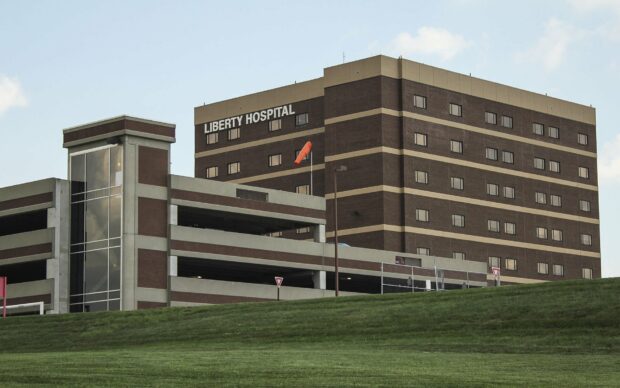HOME | ABOUT US | MEDIA KIT | CONTACT US | INQUIRE
HOME | ABOUT US | MEDIA KIT | CONTACT US | INQUIRE
Consolidation of hospitals and health systems paused during the pandemic, but is back on the front burner now. That has implications for the Kansas City market.

PUBLISHED FEBRUARY 2024
Even before the ink was dry on Deloitte’s assessment of health-care trends to watch in 2024—wherein it heralded the return of mergers and acquisitions, consolidation and convergence—the Kansas City marketplace was proving the consultancy prophetic:
• Last spring, Saint Louis-based BJC HealthCare and Kansas City’s Saint Luke’s Health System announced a merger that would create a statewide system with east/west operating divisions and 44 hospitals serving all 6.2 million Missourians.
• That came on the heels of Olathe Health’s assumption into The University of Kansas Health System, strengthening the latter’s position as market leader in the KC region.
• And in October, KU Health followed that up, teaming with Liberty Hospital to announce a partnership that would bring the larger system’s services into the Northland and expand care well into northwest Missouri as well.
Each is a case of The Big Getting Bigger, something that health-policy analysts say the nation will see more of as large health systems continue to seek efficiencies in operations, increase their bargaining power with insurance companies and vendors, and position themselves as the best employment options for health-care workers at all levels.
A great many dollars are riding on the outcomes of the consolidation movement here. Overall, roughly 50 hospitals and medical centers operate in the greater Kansas City region, but only three organizations dominate the market: KU Health, Saint Luke’s and HCA Health Midwest, the lone for-profit entity among them.
They account for nearly two-thirds of the $51 billion in patient revenues generated each year, and for solid majorities of licensed beds, patient admissions and employees—physicians, other professionals and support staff.
That’s not to say, however, that everyone outside that triumvirate is working for peanuts. The other regional hospitals are dividing a pie worth $23.8 billion, providing bedside care for more than 145,000 people admitted annually. That hardly constitutes leftovers.
The latest effort to align organizations—the KU Health-Liberty partnership—has shifted concerns over consolidation into the public-policy realm, as lawmakers on each side of the state line filed bills this session to limit the scope of the deal, or block it altogether. Missouri Attorney General Andrew Bailey took that one step further, penning a letter to lawmakers that declare it unlawful for an enterprise owned by Missouri taxpayers to be assumed into a Kansas entity.
That might be a clear-cut argument if each player were tax-supported, but KU Health operates as an independent public health authority; it receives no state support, and hasn’t since the state happily gave up control of a financially struggling enterprise in 1998.
In any case, Bailey’s letter offered ammunition to those who say the legal aspects of a partnership haven’t been vetted. Nonsense, the hospitals say.
“We assessed all applicable laws and regulations as part of the evaluation process for Liberty Hospital to join another health system,” said Liberty spokeswoman Michelle Manuel. “We disagree with the attorney general’s assessment and welcome discussions as we continue due diligence toward final agreements. Our goal is to provide the very best health care close to home for Northlanders and the surrounding area. Joining The University of Kansas Health System does this and more.”
Opposition to the Liberty-KU Health deal, supporters say, is overlooking a crucial aspect that makes it viable. In the words of Liberty CEO Raghu Adiga, it boils down to this: “The needs and preferences of those we serve.” Residents of Clay and Platte counties in the Northland, he says, are already seeking care through KU Health’s main campus adjacent to Midtown—literally bordering the state line.
Given that no institution in regional health care compares to the KU Health System in scope and reach—its mandate, after all, is to serve all Kansans, not just those in this metro area—the partnership, he says, “brings that level of care to the Northland. As an academic medical center, KU Health will help us grow in the leading edge of medicine. It will bring substantial investment in facilities and technology, and will transform how health-care is delivered in our communities.”
Taking that posture, Adiga aligns with Deloitte’s annual survey of health-system executives, 86 percent of whom believe that M&A would have a “great impact” (33 percent) or a “moderate impact” (53 percent) on their 2024 strategy. “Given the health plan sector’s strong financial position, large plans may be well-positioned to drive transformative acquisitions in 2024,” the firm said.
Beyond alignment with other providers, Deloitte said larger health-care organizations are acquiring or partnering with “non-traditional industry disruptors and innovators—tech giants, telecom, retail—as they try to meet the needs of an increasingly savvy and more empowered health care consumer. We expect this trend to continue as the industry experiences more pressure toward convergence.”